What’s the Differences Between On-Page and Off-Page SEO?
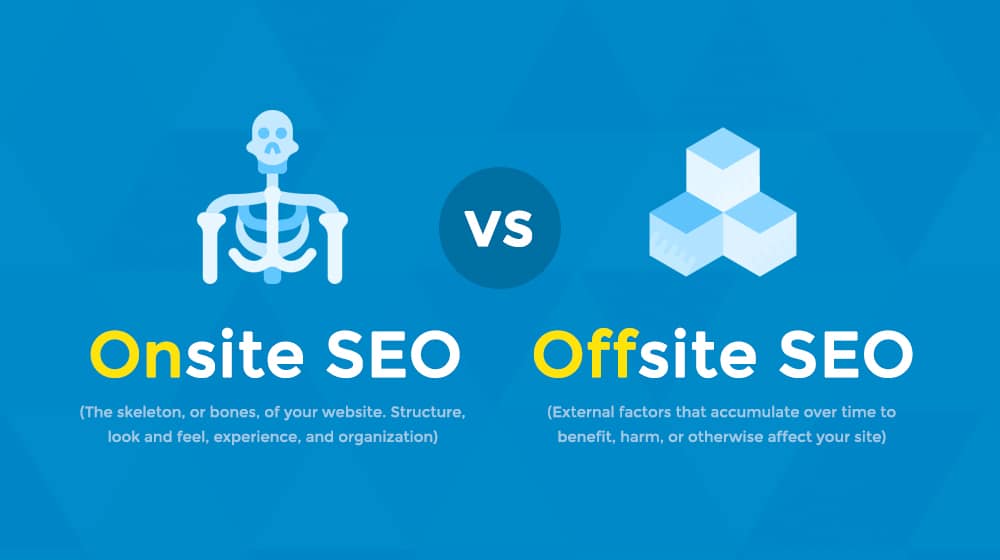
The overall topic of Search Engine Optimization is broad. Every year, it seems like, something else is added to the roster of Things That Matter For SEO.
The root of the issue is Google. In an ever-expanding desire to accurately rate and analyze websites for their value concerning various topics, Google continually finds new metrics that are important to maintaining search quality. The metrics may be important to users, or important to some technical aspect deep in the bowels of Google's systems, but they're important somewhere.
Let's think for a minute - about 15 or 20 years ago, no one cared about the page load times for a site, but these days there are half a dozen different loading speed metrics that matter.
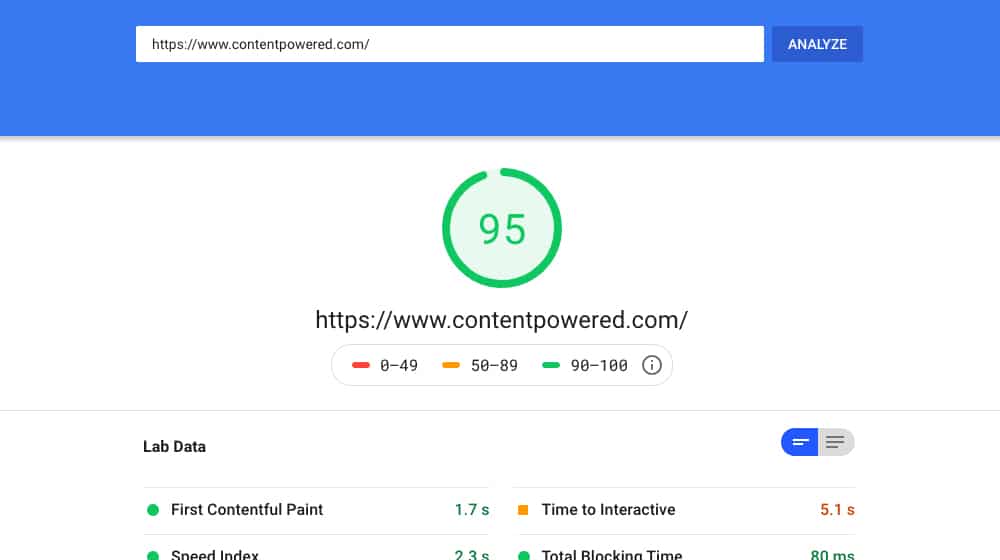
Before 2011, most marketers didn't care about the word count or quality of their content, it was all about keyword density. Google's Panda update came along and changed all of that.
I say all this so you know where I'm coming from when I say that SEO is confusing. It used to be a lot simpler than it was, and there are a lot of people out there who don't keep up with all of the little details that are constantly changing. Old blog posts about SEO don't exactly disappear when they're no longer valid, and they aren't always updated. You have thousands of sources of information about SEO, some of which are accurate, some are off-base, and some are so outdated that they are practically considered misinformation.
I've slowly been attempting to demystify some elements of SEO through posts on this blog. I've written about the quirks of technical SEO, for example. Today I want to tackle the topic of the difference between on-page SEO and off-page SEO.
At first glance, this seems like an obvious division. On-page SEO is the elements on your site that affect your SEO, and off-page SEO is elements not on your site, right?
Well, the reality is a little more complex than that. Let's get into it!
 30 Second Summary
30 Second Summary
You need to focus on both on-page and off-page SEO to rank well. Your on-page efforts should cover technical elements like page speed, mobile compatibility and proper HTML structure. You have to also create high-quality content with proper titles, headings and internal links. For off-page SEO, you should build relevant backlinks, get social shares and earn positive reviews. These off-site signals show Google that others value your content.
What is On-Page SEO?
On-page SEO is the elements that make up your site - the ones that you can change to directly interact with the Google search ranking algorithm. Most (but not all) of these elements are technical.
Here's a rundown of what constitutes on-page SEO.
1. Title tags. Your meta title tag is the first thing a user sees about your site in the Google search results. It's the primary indication of what your page is going to be about, so it's a good idea to get it right the first time. You can split-test and optimize your title tag over time (if you prefer). You will eventually develop a sense of what makes a good title, and optimizing title tags will get a lot easier.
2. Meta descriptions. Meta descriptions are second to titles in terms of showing up in Google's search results… or so they say. Google says you should optimize your meta descriptions. I ran a small test a while back, though, and discovered that only 17% of queries (in my admittedly small sample size) used the meta tags specified. It's still probably a good idea to specify them, but I don't think Google will fault you too much if you don't.
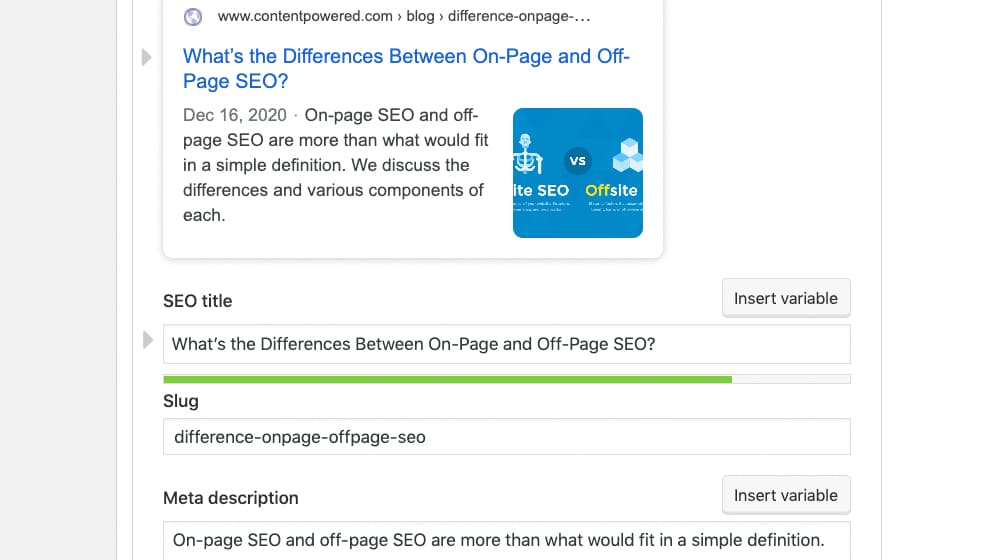
3. H1 headings. Your H1 heading is the title of your post on the page, rather than in the metadata. Often this matches the meta title, but not always. It can be a longer or more plain language way to portray what the content of the page is about. Every page should only have one H1 heading but can have multiple H2 subheadings.
4. URL structure. Modern site structures should have a human-readable URL that reflects the keyword and title of the post. WordPress does this automatically, though you can manually tweak the structure or the URL itself if you prefer. It's a relatively minor factor, but it's important enough to make sure you use it to your advantage. Nothing is worse than the old style of parameterized URLs that don't give you any information about what the page is about.
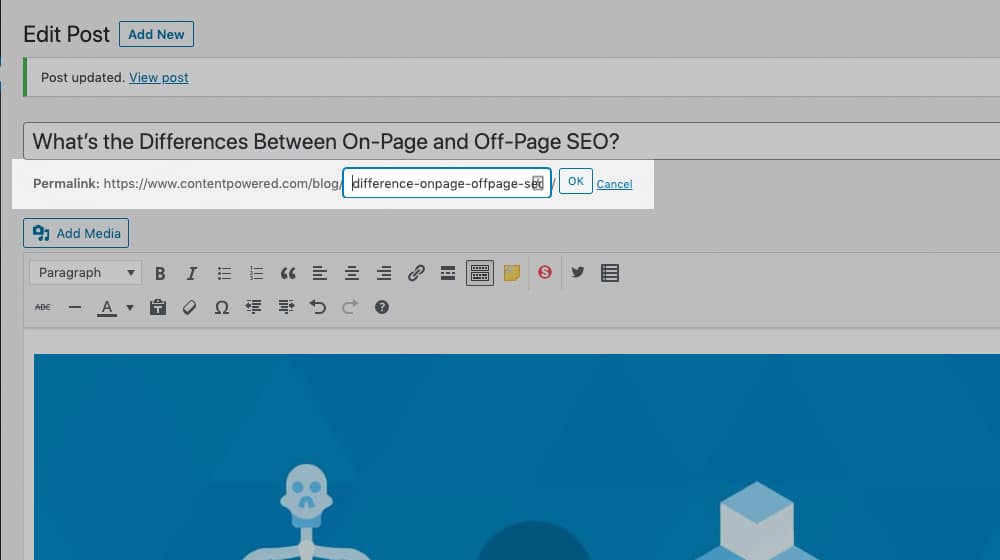
5. Image alt text. This one is kind of a placeholder to encompass several elements, most notably the use of images in the first place. Google likes posts that have images in them, even though they don't necessarily understand what's in an image. Their image analysis algorithms are getting better than ever, but they still want help from the image parameters you can specify. Alt text serves two purposes. On one hand, it's a way Google can understand what's on the image without needing to run their analysis. On the other, it's an accessibility option for people whose browsers don't render images, or for visually impaired users who use text-to-speech programs to read webpages to them.
6. Page load speed. One of the more recent metrics on the list, page load speeds are an important element of usability. It's most important on mobile - because mobile users don't like waiting for a page to load and connections are usually slower - but it's important for desktop users as well. Use Google's PageSpeed Insights tool to analyze your load times and get tailored suggestions on what might require your attention.
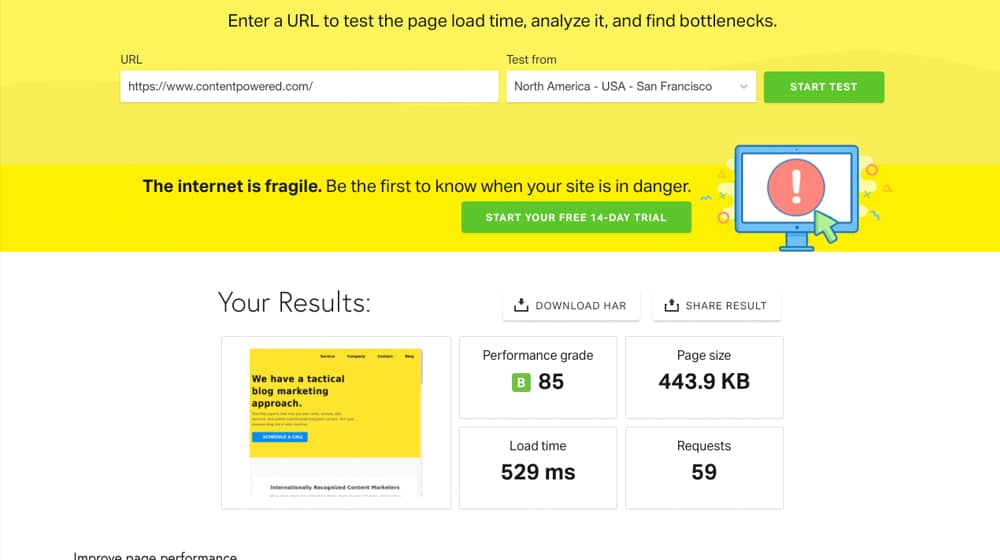
7. Core Web Vitals. One of the most recent sets of metrics to monitor, the core web vitals are a variation of page load times and have more to do with how long it takes before a page is usable, how long before the page is loaded enough that elements stop shifting around, and how long it takes for your website to appear as if it's fully loaded. You can read all about what they are and why they're important on the official site dedicated to them, here. This can be pretty technical and tricky to optimize for, though, but it's a good idea to focus on this now since this new update will be rolled out sometime next year.
8. Mobile compatibility. Mobile compatibility in general is one of the major factors that Google has been pushing for a few years now. Over half of all web traffic is on mobile devices these days, so have a good mobile experience for your site is critically important. Google has recently gone as far as rolling out "mobile-first indexing", which means that they judge your site based primarily on its mobile site, not on its desktop site. Needless to say, it's no longer optional. Responsive design is the go-to design, but there are other options if you need something and don't have time for a full redesign. On the plus side, this metric is mostly a one-and-done thing; either you're mobile optimized or you aren't. Everything else is tied into user experience, site speed, or another on-page metric.
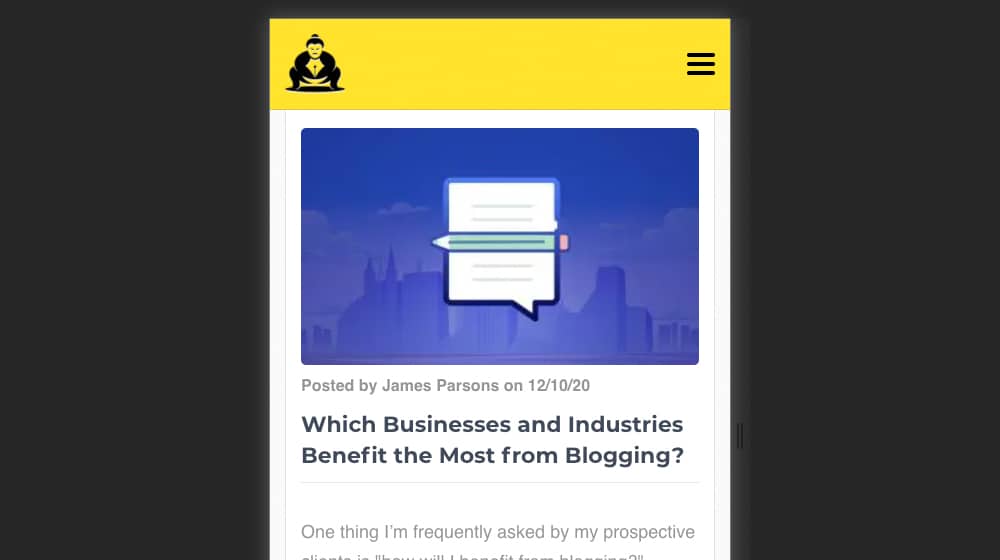
9. Content quality and uniqueness. This one is one of the biggest factors for on-page SEO in the modern era of web rankings. A huge amount of work goes into creating unique and high-quality content, far more than I can work into a single paragraph here. This post can help you with writing SEO-friendly blog content. This one by Neil Patel is a good reference for what makes great content. Another, by Composely, is a good resource on quality content in general. My advice? Hire a content creation service (perhaps, a company like ours?) or a trained writer until you have a better idea of what you're doing on your own.
10. Internal links. Linking internally is a useful way to keep users active on your site, earn additional clicks for analytics, and make sure search engines are aware of your content and the relationships between them. I found that just adding 1-3 internal links (not just a related posts widget) to each post is enough to boost article performance.

11. Schema markup. Schema.org is one of Google's cross-company efforts to unify data standards in coding. It's a markup you can use for specific kinds of data on your site, everything from reviews to literature citations to contact information and more. Most standard blogs don't make much use of it, but if you write reviews, post recipes, or use advanced information of any sort, looking up the relevant Schema markup and using it is a great idea.
12. Contact information. The presence of contact information on your site is an element of trust (see the next paragraph) and it's an assurance that customers can contact you if they want. Simple contact information or a contact form is usually all you need, but you can go a step further with Name/Address/Phone, or you can even provide a map to your store (if you have one). Not all businesses have or can use this data, so it's a relatively minor factor, but it's worth adding if you can.
13. Signs of trustworthiness. Trustworthiness elements are the parts of a site that makes the average user more likely to trust it. For example, having a logo is a hurdle for spammers who don't care enough to make one, but a site without a logo is less trustworthy than one with one. Contact information is another. Having a Privacy Policy page, an About page, and some other system pages are also often good signs of trust. I wouldn't be surprised to hear that a Careers page or a Helpdesk page are other lesser-known examples. These are not only signs that you are a real business, but that you care about your business and you're providing for your website visitors.

14. Page structure and user experience. This is pretty subjective, but the overall structure of your site and of the pages on your site, as well as the experience a user has when they're using your page, are elements of on-page SEO. There's some evidence to suggest that Google's next major project, similar to Core Web Vitals, will be a codified way of analyzing user experience, but that's something to worry about next year.
You also want to make sure your site ranks well on mobile, doesn't have any weird glitches or pop-ups that can't be closed, and doesn't have a font that is too small or too lightly colored. These are all things that hurt your user experience, and they just a few examples of definitive Google ranking factors for user experience.
15. SSL/HTTPS usage. A simple element to round out the list - having a secure website. Google lives on harvested information, but even they admit that secure, encrypted traffic is better than the alternative.
16. Value and user experience. With every page on your site, you should look at it and ask how you can add content to that page to better serve its purpose. Do you have hundreds of empty pages with very little to no content, like tag pages or attachment pages? Those are low-value pages that are likely hurting your site. Are your pages thousands of words of unique and helpful content that has high engagement with your visitors? Your site will likely perform very well.
There are many things that fit in the on-page SEO category, but most of them can be fit into these categories.
What is Off-Page SEO?
In contrast to all of the elements of on-page SEO, off-page SEO is the elements of SEO that you don't directly control. These are elements that are either in the hands of other people, like backlinks, or derived metrics, like Domain Authority. You can work to increase them through things like outreach, marketing, and a variety of gray- and black-hat techniques. What all is encompassed by off-page SEO?
1. Backlinks. Backlinks – links to your site from other sites – are the foundation of all search engine rankings. They're what Google was based on before they cared about anything else. Modern backlink analysis has a lot of factors involved, but most of them come down to relevance and authority. You want to, in general, build links from sites that are bigger than yours and have more authority, are relevant in industry and topic, and have relevance within the text. Entire blogs, not just posts, have been written about links, so this is a very detailed topic you can dive into.

2. Social shares. Social shares are a questionable metric. Google doesn't like using them directly because they're so easy to fake or buy, but at the same time, social prevalence is a good indication of the popularity of a piece of content.
3. Author prevalence. How common is your author bio across the web, particularly on authority sites? An author with credits on multiple popular, industry-relevant sites is going to lend some authority to the content they write on yours. This is all part of the overall Google EAT scores; Expertise, Authority, and Trustworthiness.
4. Brand mentions. Brand mentions and (to a lesser extent) mentions of an author's name are part of what Google calls "unlinked mentions" or unlinked citations. I can mention Forbes and you know what I'm talking about, even if I don't link to the site. Getting unlinked citations isn't quite as good as a link, but it's data that Google tracks and uses in their ranking algorithm.
5. Domain Authority. Years ago, Google stopped updating its PageRank algorithm, which was a numerical measurement of the SEO value of a site or page. Several different metrics sprang up to replace it, one of which was Domain Authority. Domain Authority is provided by Moz and has proven to be one of the more accurate reflections of SEO performance maintained by a third party.

It's worth mentioning that Moz Domain Authority is not directly an SEO factor. It's a measurement of factors across your site and is reflective of what Moz's experience indicates your SEO performance should be, relative to all other websites in the world. Improving Domain Authority does not improve your SEO ranking, but improving the factors that go into calculating Domain Authority will generally correlate with improved SEO performance. For example, if your site increases from a DA 15 to a DA 25, chances are pretty good that you acquired some strong links that benefitted your site quite a bit.
6. User testimonials and reviews. Specifically, testimonials and reviews on third party sites. Positive citations on sites you don't control are more powerful than citations on sites you do.
As you can see, while there are fewer individual elements in off-page SEO than there are on-page, each of those elements encompasses a whole lot more.
Which Kind of SEO is More Important?
One mistake we often make as marketers is picking specific sub-metrics and elements of our craft to focus on to the exclusion of all others. This can be an example. Which is more important? They're both important! You can't have a site that thrives without both sides of the coin.
On-page SEO is important when launching a site, and needs to be kept above a certain level; otherwise, your site may never rank as well as it has the potential to. It's also where most of the "moving targets" are in Google's algorithm. What constitutes value in many of those metrics changes from time to time.
Off-page SEO is a measure of how well people like your site. Google loves those metrics because they're a good indication of a site's utility and quality; a low-quality site doesn't get links and shares, after all.
You can't ignore one or the other. You can, however, make one more or less mechanical. On-page SEO is largely stuff you either do once and only optimize or tweak once a year (like site speed or mobile compatibility), or steps that you take when you're creating content (like your titles, H1 tags, and keyword usage). Some of this is stuff you can even use a plugin to manage, though plugins are generally a little less effective than the human touch.
Meanwhile, off-page SEO generally requires more time and investment. Building links through outreach, guest posting, and social media campaigns, soliciting reviews and testimonials, creating high-quality linkable content; it's all a lot more work than tweaking a heading or title. The sky is the limit, and for many marketers, this job is never completed.
So, in the end, you should really be focusing on both. Build yourself a checklist of things to do (using this post can be a good place to start) and get to work.



 30 Second Summary
30 Second Summary



December 21, 2020
Awesome article. I agree that both are equally important. I think we first focus on straightening on-page SEO. Once it is done and perfected then it makes more sense to work on off-site SEO.
December 27, 2020
Hey Elbert, thanks for your comment and happy you found it useful!
January 20, 2021
Do you have any suggestions on how to optimize my off-page SEO without spending much money?
January 22, 2021
Hi Hakim!
Well, assuming you're already creating great content regularly, you could look into creating more linkbait content.
Here's a link to read more:
https://www.contentpowered.com/blog/different-types-blog-posts/#10_linkbait
These are the types of posts that are more likely to generate links than others.
You could look at some of your competitor's most linked posts with software like Ahrefs.
Often times, these are viral pieces of content like infographics, or helpful and linkable resources like calculators, lists, collections, downloads, etc.
This won't cost you anything extra if you're already producing content, and if done properly it will yield positive results for you over time.
Hope this helps!
October 02, 2022
This and the article you linked here have beneficial advice. Kudos to you for always providing great articles!
October 07, 2022
You're welcome!
July 26, 2021
You explained it well man! Good stuff!
August 03, 2021
Thanks William! I appreciate it 🙂
September 24, 2021
That was an amazing article about on-page SEO vs off-page SEO. It helped me understand these two a bit better.
September 27, 2021
Thanks, Akhil! I'm glad it was helpful to you.